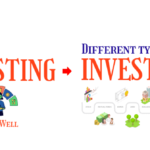Retirement means ceasing to engage in a profession, job, or work duties. Another way to take semi-retirement is to reduce workload or work hours.
A retirement fund is a savings account you create for retirement. You can set it up yourself or through your job to invest money for future income. will find out examine what we need to do before retirement, how much we need to save, and how much we need to invest in a retirement plan.
What is retirement plan? Retirement planning is making plans now for your desired future lifestyle. To reach your retirement goals, set targets, calculate needed income, and invest to grow your savings.
Why retirement planning is important?
- Investing early allows your money to grow and earn better returns over time.
- It will keep you financially fit for your demands after retirement.
- If your goals may be starting a new business, traveling, or buying a house.
- Your post-retirement dream will determine how much you need to save for retirement.
How to set up a retirement fund?
- Saving is a method of saving for the future. So, you start accumulating funds and stick to the financial goals you set.
- Retirement money is a savings tool to meet future needs. Experts say you need 70 to 90 percent of your profit after retirement. So, know how much money you will need after retirement.
- Join a member of your employer’s retirement plan. Tax deferrals and compound interest have a significant impact on the total amount you accumulate. An employer’s retirement contribution savings plan is open for enrollment.
- Find out if you’re affiliated with an employer’s pension scheme, how it works and how it’s best for you. Ask for a personal statement to know your benefits.
- Your investment may vary depending on many factors, such as your age, goals and financial circumstances. Know how your financial savings or retirement plan is invested.
- Avoid withdrawing money or spending your retirement. Because of this, early withdrawals from your retirement fund can result in loss of tax benefits, withdrawal penalties and forfeiture of principal and interest.
- Your company may put in place an easy plan that benefits both of you. If your workplace does not already have a retirement savings plan, ask them to set one up.
- Make a deposit into your individual retirement accounts. The annual maximum contribution to an account is $6,000; if you are 50 of age or older, you may contribute more. IRAs can offer a simple means of saving money. The IRA receives an automatic transfer of funds from your checking or savings account.
- Find out what benefits social security offers. For pension recipients, social security pension benefits replace 40% of pre-retirement wages. The pension estimator on the Internet allows you to calculate your pension.
- Don’t hesitate to ask your employer, bank, union or financial advisor any relevant questions. Ask the questions and recognize the answers. Get practical advice and react.
How much retirement funds do I need?
How much retirement fund should I have? Retirement is a break from our work or busy schedule. The amount we save before retirement will help us meet our needs after retirement. You must decide when to retire.
However, early retirement benefits begin at age 62. Therefore, you should try to transfer 70% to 80% of your annual pre-retirement income.
Social Security, savings, investments, and other sources of income can all be used to replace pre-retirement income, such as part-time work, pensions, and rent.
While it’s crucial to estimate your retirement expenses, you need also take some modifications into consider. It’s a pleasant trip with an unexpected medical bill or health issue. There is also an opportunity to reduce certain regular costs in its absence. Here are the usual expenses:
- Amount paid so far for pension.
- Your mortgage and other debts may be settled.
- Payroll taxes deducted from salary will be eliminated.
How many investment funds should I have?
A common rule of thumb among retirement experts is to save enough to generate an annual income equal to 80% of your salary before retirement to maintain your standard of living. For example, if you earned $100,000 a year before retirement, you would build a portfolio that could earn $80,000 a year to live comfortably after retirement.
This standard may change based on other financial sources, such as Social Security payments, a part-time and pension plan to work, and personal circumstances such as your health and preferred lifestyle. Many experts recommend accumulating at least 10 times your annual salary before leaving the workforce.
How many mutual funds to invest in? Mutual Fund is a diversified investment platform for retirees. Thus, even if there is no profit in one sector, there is profit in another sector. This will reduce the risk. The number of mutual funds in the US will be 7,393 in 2022.
Those with retirement accounts, such as IRAs or 401(k)s, are usually able to invest in mutual funds. For your IRA or 401(k), you can select one or more mutual funds in addition to other assets. You may invest in everything in retirement accounts, from individual stocks and bonds to ETFs, real estate, and commodities.
Since retirement planning is done with a long-term perspective, mutual funds are a suitable choice. For investment periods of 3 years or more, investment returns are typically 12% to 15% per annum.
It’s not easy to figure out how many funds to put in a portfolio, but eight funds may be the ideal number depending on the investor’s retirement savings goals and aspirations. Furthermore, it is important to allocate a significant amount of the portfolio to suitable funds.
How many funds should I have in my retirement portfolio?
There are simple ways to build an appropriately diversified retirement investment portfolio. By using single fund, a pair of funds or three funds, you can achieve adequate diversification, reduce fees, and simplify your approach.
These streamlined strategies achieve perfect diversification for retirement, keep costs very low, and are relatively simple to implement, which may be your biggest advantage.
1. Single fund portfolio
You may invest in target date funds and combine all your retirement portfolio into one fund. Rather of purchasing individual stocks or bonds, the fund invests in a variety of mutual funds, also referred to as funds of funds.
After choosing a target date fund, set up automatic contributions and the fund managers will take care of the rest. They adjust the fund portfolio periodically to ensure that it aligns with the appropriate mix of stocks and bonds based on the retirement status of the holders.
2. Pair of fund portfolios
An effective method for building a two-fund portfolio involves choosing a bond fund that combines a US equity fund. However, there are differences between the two based on specific asset allocation.
A portfolio consisting of two funds, 10% allocated to US Treasury notes and 90% allocated to the S&P 500 index fund. One of the shareholder letters suggests this strategy, indicating how his trustee would advise investing money for his wife following his death.
3. Three fund portfolios
A three-fund portfolio refers to one that consists of three index funds or ETFs. Financial advisers typically advise investors to select wide market bond funds, foreign stock funds, and total U.S. stock market index funds. Your age, financial objectives, and risk tolerance all have a role in how much money you allocate to each of these.
Over the long term, shares have outperformed bonds and cash. Since the Great Depression began in October 1929, US stocks have averaged an annual return of 9.6%. In contrast, the bonds have provided an annualized return of 5.6% during this time.
How many index funds should I own?
How many index funds should I invest in? An index fund is a type of funding that tracks a marketplace index. It is a type of exchange-traded fund or mutual fund that holds all the stocks that make up a specific index.
Many individuals agree that index funds are great starting investments for retirement plans like 401(k)s and IRAs. For later life investments, index funds offer a haven.
Rather than picking stocks to invest in, the average investor would be wise to purchase each S&P 500 business through an inexpensive vehicle such as an index fund. This can reduce the risk factor. Because the total amount is not put in just one.
How many funds should you invest in?
Appropriate saving for retirement depends on many factors, including one’s age, income level, chosen lifestyle and monitoring goals. It is generally advised to save at least 15-20% of your income for retirement. Starting to save early allows you to expand your savings over a longer period.
You can start your savings according to your age and invest in retirement. Your savings may continue until you reach retirement age. But your savings rate will certainly increase as you move towards retirement.
| Based on saving age | Based on salary (Multiplies) |
|---|---|
| Age 30 | 1x |
| Age 40 | 3x |
| Age 50 | 6x |
| Age 60 | 8x |
| Age 67 | 10x |
Conclusion
The concept of retirement planning encompasses various financial strategies involving accumulation, allocation, and eventual distribution to provide for one’s financial needs in old age. Your specific savings of long-term goals depends on many factors, including your estimated retirement age and lifestyle.
A sum based on future costs, such enough to take out 80% to 90% of your pre-retirement income per year; a simple computation such as accumulating 12 times your salary before retirement. But now that you have this, you will know what is best for you and how to make the choice.
Pro Tip
This guide serves as a valuable resource for those already in retirement or looking to invest in a retirement plan. Additionally, if you have an inclination towards investing, we invite you to explore our trusted forex broker platform. Here, you will find a wealth of useful information and insights on investment strategies, encompassing stocks, bonds, CFDs, and forex, tailored to enhance your investment acumen.
FAQ – Frequently Asked Question
1. How much is a good retirement fund?
To ensure that you can comfortably support a retirement with 55% of your pre-retirement income, you should strive to save ten times your yearly wage by the age of 67.
Financial experts advise saving up to 12 times your salary by the time you reach age 67, the standard age for receiving full Social Security benefits. This savings goal will allow you to maintain an above-average standard of living when you stop working.
2. Is a retirement fund an investment?
A retirement fund is a type of long-term investment account that helps a person save money for retirement. Retirement funds, also known as pension funds, give individuals the option to set aside some of the money they earn in investments to fund their post-working years.
3. What is the size of the pension funds?
The overall value of pension funds has seen a significant rise over the past ten years. The total value surged from approximately $17.9 trillion in 2010 to $40 trillion in 2021.
4. Who is responsible for funding retirement?
A Social Security retirement benefit provides monthly payments to replace some of the income lost when a person retires or reduces their working hours. However, Social Security is not intended to replace all retirement income, so it is wise for people to find additional ways to pay for their living expenses as they age.
5. What is the 4% retirement plan?
One prominent strategy is the 4% rule, which suggests that retirees take out 4% of their money in the year they retire and then yearly adjust for inflation over the following thirty years.




